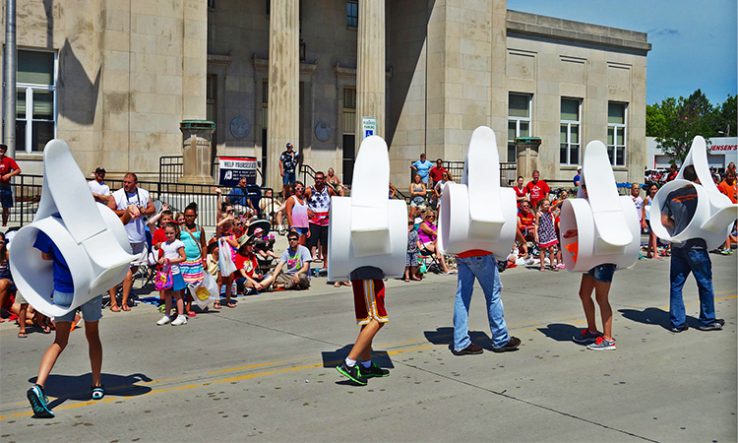
Image: Scott McLeod [CC BY 2.0], via Flickr
Basic, translational and clinical research into spinal injury are all covered by Wings of Life
Top tips
- Wings for Life funds basic, translational and clinical research, but its fields of interest are quite tightly circumscribed.
- The charity does not assess bids against strict criteria, and novelty is valued but not supremely so.
- Preliminary data is highly valued.
- Don’t plan the entire project at the preliminary application stage; it’s a short document, designed to save everybody time.
Founded in 2004, Wings for Life is a private research charity based in Austria that funds basic and clinical work into a cure for spinal cord injury. The charity was founded by two-time motocross world champion Heinz Kinigadner and the founder of Red Bull, Dietrich Mateschitz, after Kinigadner’s son Hannes was left tetraplegic following a motocross accident.
The charity runs two core funding schemes. Project Research Grants support costs for entire projects and are worth up to €100,000 per year. Individual Grants, meanwhile, cover salaries for staff working on spinal cord injury projects and are worth up to €21,000 per year for technicians, €34,000 for PhD students and €57,000 per year for postdoctoral scientists.
Wings for Life runs a two-stage application process. This year the deadline for preliminary applications is 1 September. Full applications for selected projects are due by 2 November. The charity also offers support for clinical trials on a rolling basis, without a deadline.
The charity’s scientific coordinator, Verena May, explains the rationale that underlies its grant-giving.
What is the driving force behind Wings for Life?
Our mission is to find a cure for spinal cord injury. For that we fund world-class basic and clinical research around the globe. The main focus is traumatic spinal cord injury. There is no cure for spinal cord injury and the pharmaceutical industry is not interested because the market is too small. We understand that to improve the outcomes for patients, you have to carry out basic research.
How many grants do you fund a year?
We awarded 26 new grants this year. For next year it will depend on the funds we will raise during the year.
And researchers anywhere in the world are eligible?
Yes. From a PhD student up to a senior researcher—we try not to exclude people by any administrative criteria. We also don’t exclude researchers in private or commercial organisations. It’s not always easy for them, but yeah, they can apply.
How long do grants last?
You can apply for a maximum of three years. If you apply for a three-year grant you will initially only get approved for two years, and then after that you have to submit an interim report that will be sent out to reviewers again. We will evaluate if the project has been well-implemented and has made progress. If yes, then the third year will be awarded. A no-cost extension can be granted at the end—we get several requests at the moment, because of disruption related to the Covid-19 pandemic.
What subject areas will you consider?
Our focus areas are quite specific and are listed on our website.
Within those areas, are there any topics you’d like to see addressed with greater frequency?
We try to keep it open, because we know if you fund something today, it takes years for the results of that research to bear fruit. Overall our major focus is really biological repair. Projects in secondary areas—the medical complications of spinal injury, cardiovascular function or neuropathic pain—can be funded, but it’s not our major focus.
What can favour a bid’s eventual success?
We would like to see some preliminary data; without any it’s really difficult to properly assess the grant. Just having some kind of data showing that your idea or hypothesis is valid is quite important. Of course we seek novel research, but then we also want to encourage researchers to translate their basic findings into the clinic, and in that translational process it’s obvious that a finding cannot always be novel. How highly we value novelty depends on the context.
Tell me about the assessment and review process.
Our internal board, whose members—as with all our reviewers and panellists—are listed on our website review the preliminary applications or executive summaries. They decide which projects will be invited for a full grant application. The review of full applications takes place between November and March. Applications are sent to external reviewers and our scientific advisory board will also review them.
How is the final decision made?
Around April we will have a meeting with our internal board, where we discuss every single project, and the reviews of the external reviewers and scientific advisory board, and decide whether or not a project will be funded. We don’t list applications based on criteria; every application will be viewed in its context. The projects are then due to start in July.
How many executive summaries do you receive and how many progress to full applications?
We receive about 200 summaries a year and about 60-80 will be invited to the second round.
How should people approach the executive summary?
The executive summary is normally just one page and the full application is up to 35 pages. We don’t want applicants to spend time working up a 35-page application when it doesn’t make sense for Wings for Life. We’re keen to reduce the workload at both ends.
So you really are looking for a concise outline of the project at the summary stage?
Yes. The summary is 6,000 characters. You should explain the background to your hypothesis and also describe preliminary data. It’s not intended you show figures or actually show data; it’s really describing what it is about and why it would fit in our focus.
Can people reapply if they’re not successful the first time?
Yes, if you apply but get rejected, you’re welcome to apply next year.